Labour of love as 100 year old naval guns are dismantled for conservation at Scapa Flow Museum
Date: 30 November 2021
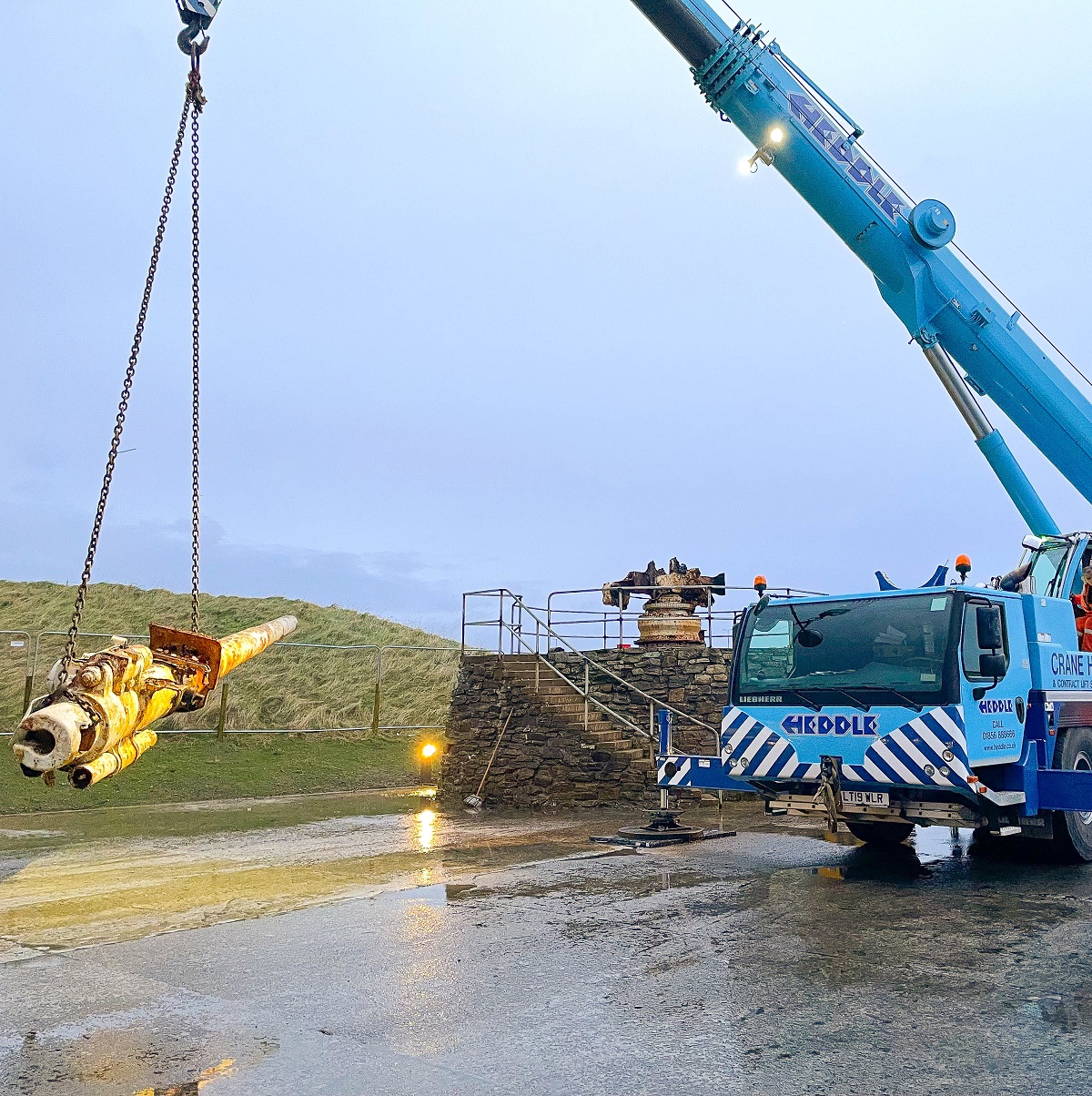
Local contractors Heddle Construction and Orkney Builders Contractors Ltd have successfully eased 100-year old naval guns from their plinths at the Scapa Flow Museum under the watchful eye of the Council’s Museums team.
(Image of crane in operation lifting an 8 tonne gun barrell courtesy of Heddle Construction Limited)
In a delicate operation carried out over two/three days last week, barrels were disengaged from mounts and century-old screws removed - with no cutting required - as the guns were removed from their plinths and dismantled in preparation for storage or transport to await conservation work.
The guns - which are two of only five First World War German naval guns surviving in the UK – are from SMS Bremse and SMS Karlsruhe which were interned with the rest of the High Seas Fleet in Scapa Flow in 1918, and scuttled by their own crews on 21 June 1919. Both are 15cm SK L45 guns – the Bremse gun was salvaged by Ernest Cox ten years later, but Karlsruhe remains on the sea bed and is a popular site for recreational divers.
Visitor Services Officer for the Museum, Jude Callister, was there as the guns were dismantled: “It was a true labour of love - there was so much care and regard shown for these special artefacts by the contractors. They pulled out every tool in their toolbox – heat, hammering, wire brushing, pressure – to coax the various components apart. They also helped us to record all the various parts with archaeological precision from the very start – right down to which bolt came from which aperture. We are absolutely amazed 100 year old bolts were recovered with no damage – we can’t thank the contractors enough for their calm, care and persistence dealing with what was a nail-biting experience for the curators!”
Nick Hewitt, Team Leader (Culture) for Orkney Islands Council was also on hand to oversee the operations: “We’re so pleased with how well it all went – there is always the potential with artefacts of this age, size and nature for damage to take place, but happily in this case we were able to dismantle them without mishap. They’ll now be able to have the type of expert conservation care they need, from the inside out, to help ensure they can remain on display for the next 100 years.”
The guns will go into storage as the team continues to hunt for the funds necessary to conserve artefacts of such international significance. But the team is confident the huge investment in the current Museum refurbishment and extension will help the Council leverage funding to get these extraordinary artefacts the care and expert work they need to protect and restore them.
Also lifted by the contractors was Hotchkiss gun from the deck of HMS Hampshire - one of 18 quick-firing (QF) 3-pounder Hotchkiss guns carried by the vessel. It is destined for conservation work by JPS Restoration, specialist large industrial conservators based in Alloa and is expected back in Orkney in the run up to Christmas, to take up position inside the new Museum extension.
Correction to this article as originally published - the gun referred to above from the wreck of HMS Hampshire and transported for conservation is actually a Vickers 3 Pounder Mk II Quick-Firing deck gun. In 1905, when she entered service, the Hampshire was equipped with eighteen similar guns of an earlier design, ie Hotchkiss guns. These were later replaced by the Vickers guns. From 1916, the number was reduced to 14. These Quick-Firing guns were capable of firing 20 rounds per minute up to a range of 3.2 miles (5.2 km). They were mainly intended for use against attacking enemy torpedo boat destroyers. This was in addition to her main armament of four 7.5-inch guns and six 6-inch guns. Three Vickers guns were recovered from the wreck, all now in Orkney Islands Council's Museums' collection; the newly-restored gun mentioned in this article and which will be on display in Scapa Flow Museum, one in the reserve collection (in storage), and one on display at Marwick Head, at the start of the public path to Kitchener's Memorial.
The Scapa Flow Museum charts Orkney’s military involvement in the First and Second World Wars and provides a safe home for a major collection of wartime artefacts, many of national and international importance.
It is currently undergoing a refurbishment project valued at of £4.3 million, comprising an extension to the Museum and refurbishment of the historicpumphouse, supported by Orkney Islands Council, the National Lottery Heritage Fund, Historic Environment Scotland, the Orkney LEADER 2014-2020 programme, Highlands and Islands Enterprise, Museums Galleries Scotland and the Scottish Government’s European Regional Development Fund programme, managed by NatureScot through the Natural & Cultural Heritage Fund. (The Natural & Cultural Heritage Fund is part of the Scottish Government’s European Regional Development Fund programme, which finishes in 2023. NatureScot is also managing another element of the programme – the Green Infrastructure Fund. The Scottish Government is the Managing Authority for the European Regional Development Fund and the European Structural Funds 2014-20 Programme. For further information visit the Scottish Government website or follow @scotgovESIF.)
The Musuem is due to reopen to the public in early summer 2022.
SMS Bremse was a minelaying light cruiser launched in 1916 in Stettin. She spent the war operating in the North Sea, taking part in a raid on British convoy to Norway in 1917 which resulted in the sinking of two Royal Navy destroyers and nine merchant ships.
SMS Karlsruhe was a light cruiser, launched in 1916 in Kiel and named after the Imperial German Navy’s famous raiding cruiser which was lost in the Caribbean at the start of the First World War. She saw service in the North Sea and the Baltic. The gun from this vessel in the Museum’s collection is missing its gun shield.
HMS Hampshire struck a German mine off Marwick Head in heavy weather on the evening of June 5, 1916, and sank within 15 minutes. All but 12 men of over 650 on board perished, including Lord Kitchener, who was travelling with a delegation to Russia.
Image below: The shield from the Bremse gun is gently lowered to the ground after the original bolts holding it in position had been carefully unscrewed.
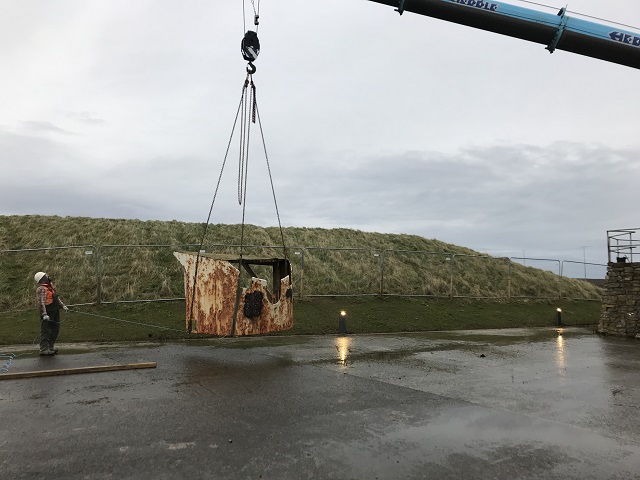
Image below: The 8-tonne barrel of the Bremse gun being swung onto a lorry.
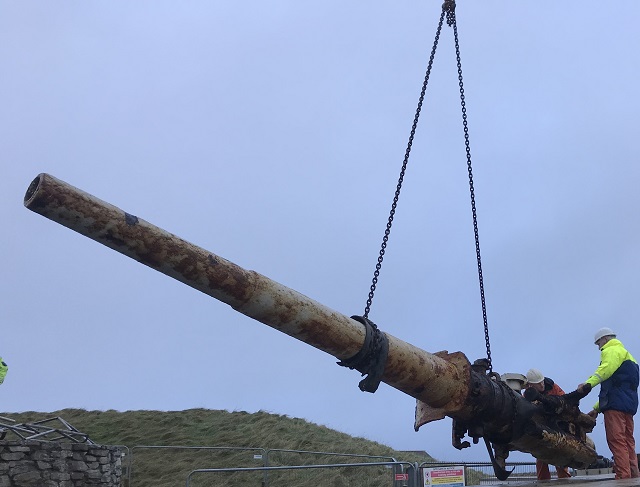
Image below: Both barrells ready for storage.
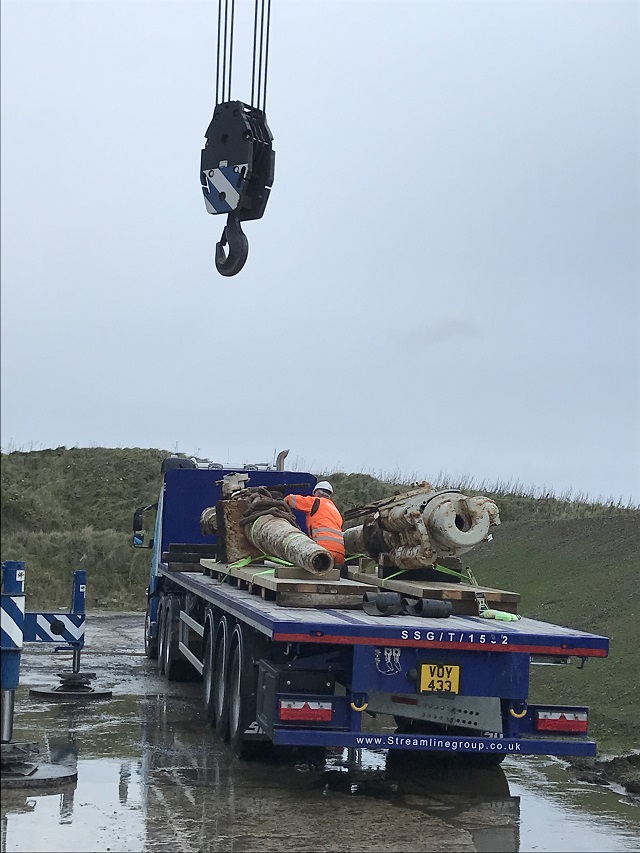
Image below: The 8-tonne Bremse gun barrel is carefully manoeuvred into storage.
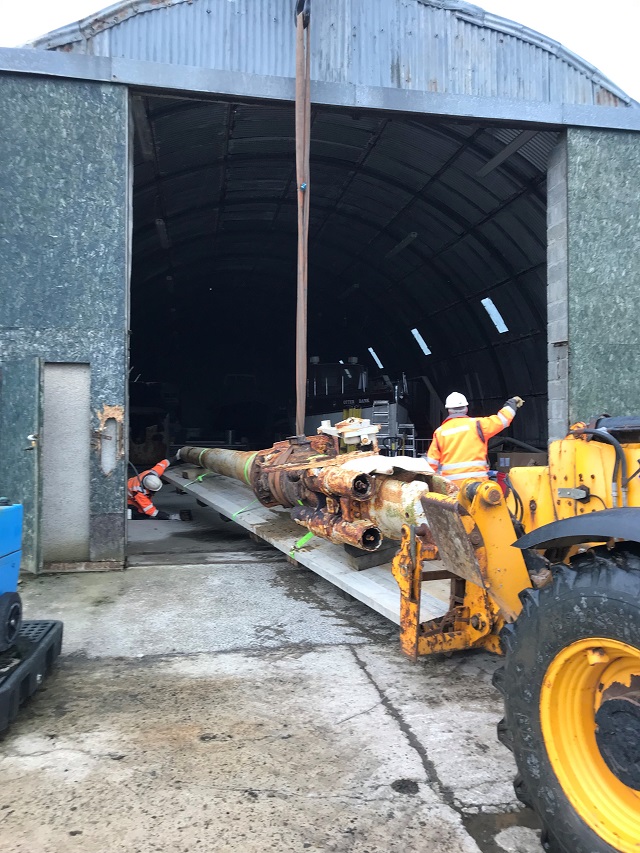
- Summary:
Local contractors Heddle Construction and Orkney Builders Contractors Ltd have successfully eased 100-year old naval guns from their plinths at the Scapa Flow Museum under the watchful eye of the Council’s Museums team.
- Category:
- Leisure and Culture
- Scapa Flow Museum
- Arts, Museums and Heritage
- External Link:

